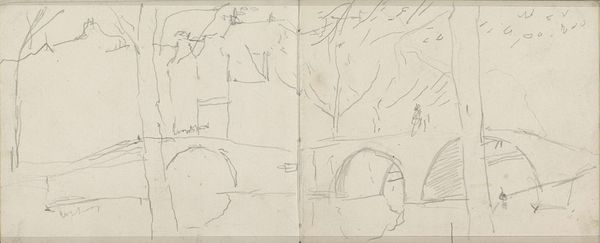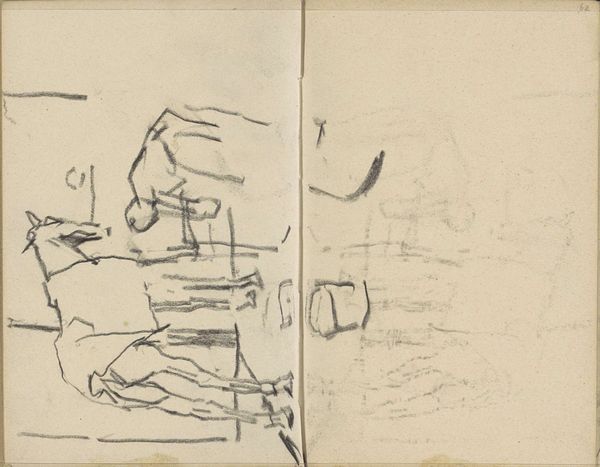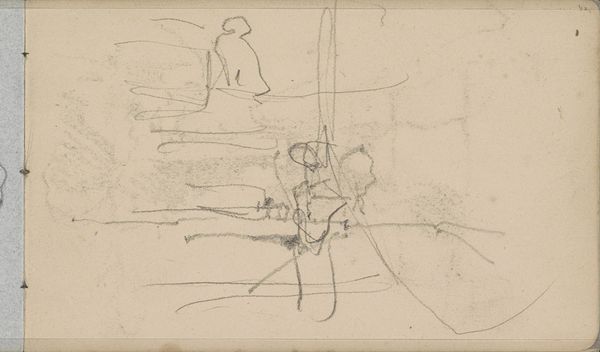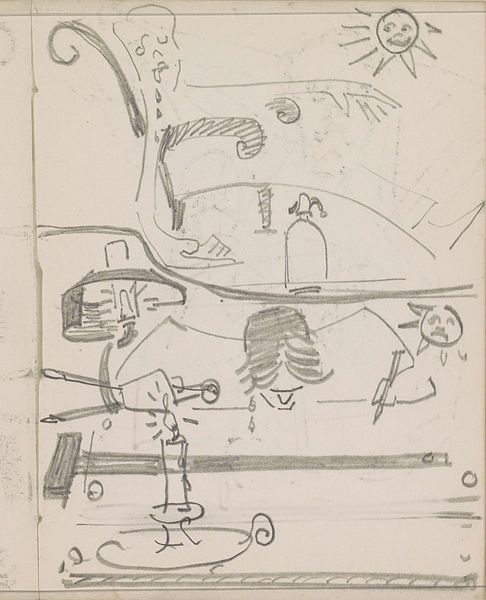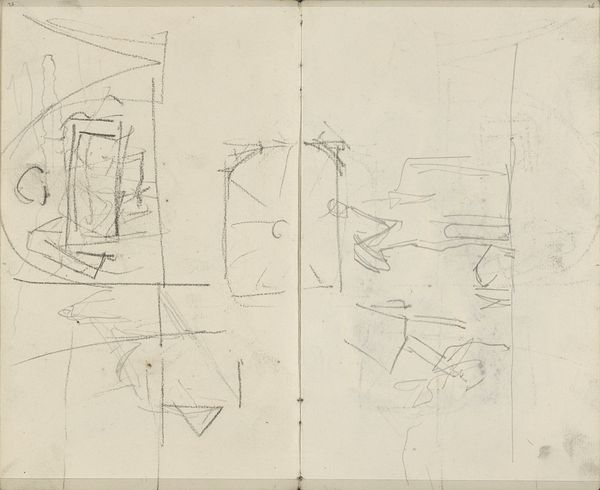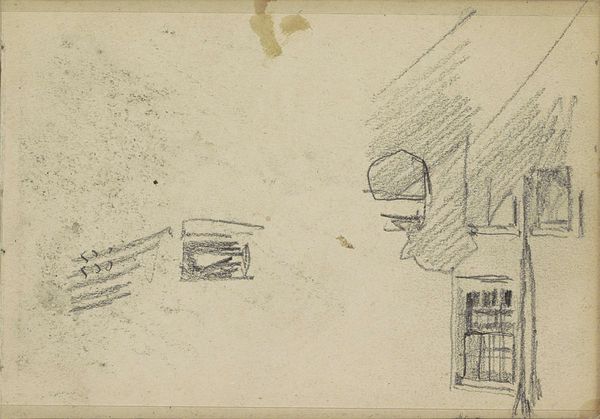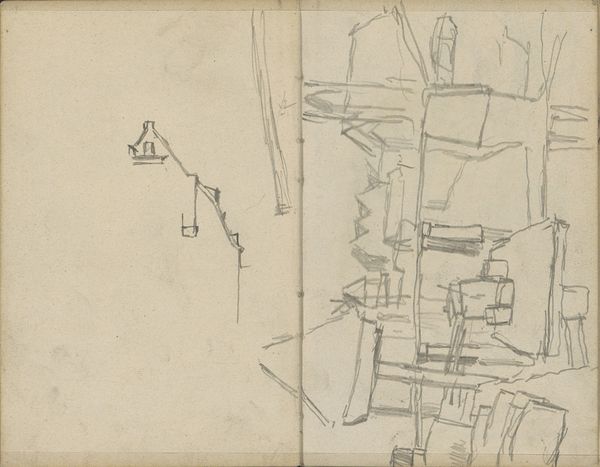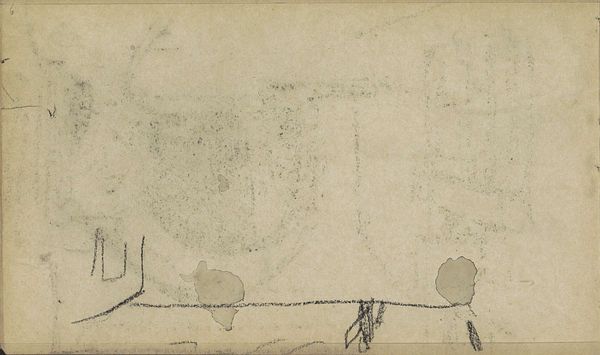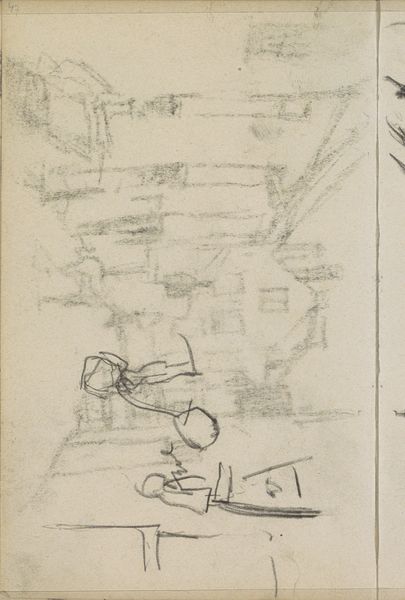
Copyright: Rijks Museum: Open Domain
Curator: I’m immediately struck by the ephemeral quality of this drawing; the almost frantic, layered pencil lines give it an air of urgency, don't you think? Editor: It's indeed an interesting visual experience. What we’re looking at here is entitled “Figuren, mogelijk op straat”—“Figures, possibly in the street.” Created by George Hendrik Breitner sometime between 1886 and 1903, it's currently held in the Rijksmuseum's collection. Curator: The layering gives a sense of social density; there are figures sketched over each other. I wonder about Breitner's focus during this period in Amsterdam—the lived realities of people often ignored by the mainstream. Did he intend to spotlight the often marginalized communities inhabiting the city's underbelly? Editor: The interplay of light and shadow, although minimal given it's a pencil drawing, guides our focus. Note the compositional structure—the foreground figures anchoring the scene, and the sketched background, hinting at buildings. There’s a tension created by these visual elements that draw us in and out of the reality it's attempting to depict. Curator: Absolutely. It makes you think about whose stories are deemed worthy of representation. The looseness of the figures—almost like ghosts—suggests a critique of visibility and the power dynamics at play within the urban environment. Is this a commentary on the fleeting nature of existence for some city dwellers? Editor: It’s allusive rather than definitive, certainly. Consider the artist’s decision to present the work in such a raw, unfinished state; the exposed pencil strokes serve to highlight the artifice and the inherent limitations of representation. Curator: Ultimately, Breitner captures a moment of time, but also gestures toward a broader narrative about class, visibility, and social identity. The act of sketching these figures could itself be seen as a form of resistance against erasure. Editor: I appreciate that reading. This brief visual examination allows us to decode the deeper meaning that lies beneath its fragmented visual vocabulary. Curator: Agreed; and, personally, it provokes a much broader interrogation of whose reality we are accustomed to seeing represented in art and in what context.
Comments
No comments
Be the first to comment and join the conversation on the ultimate creative platform.
